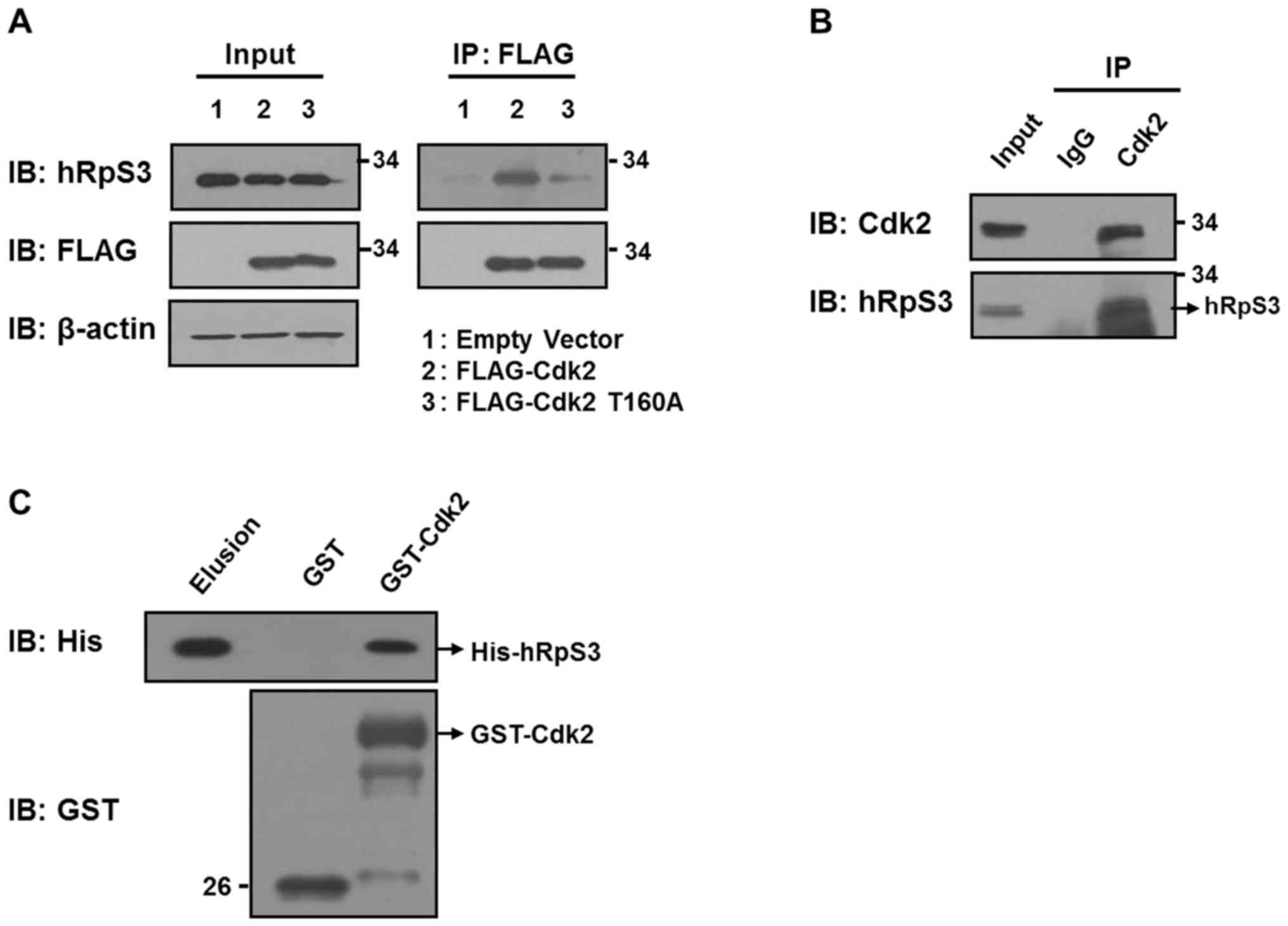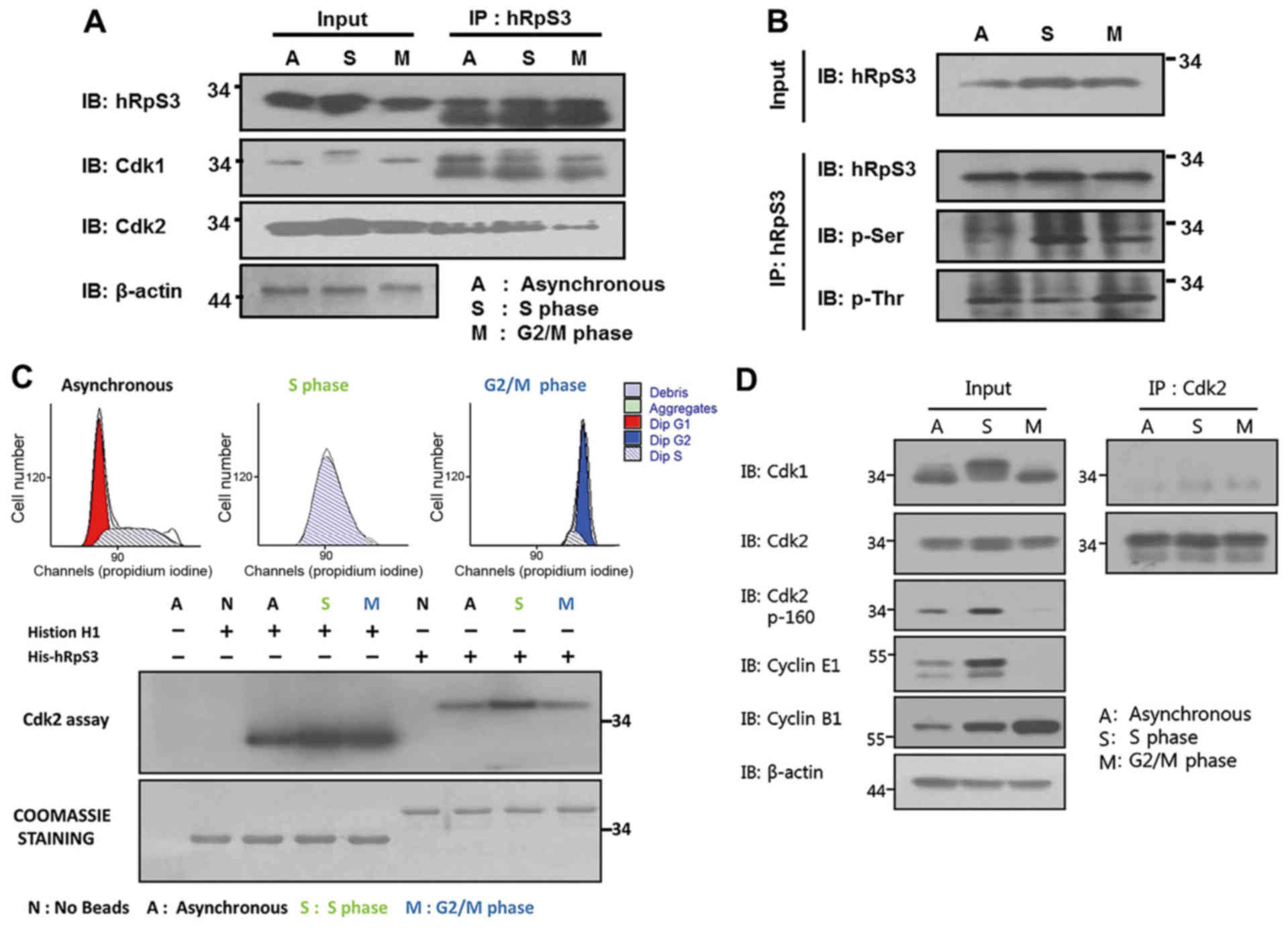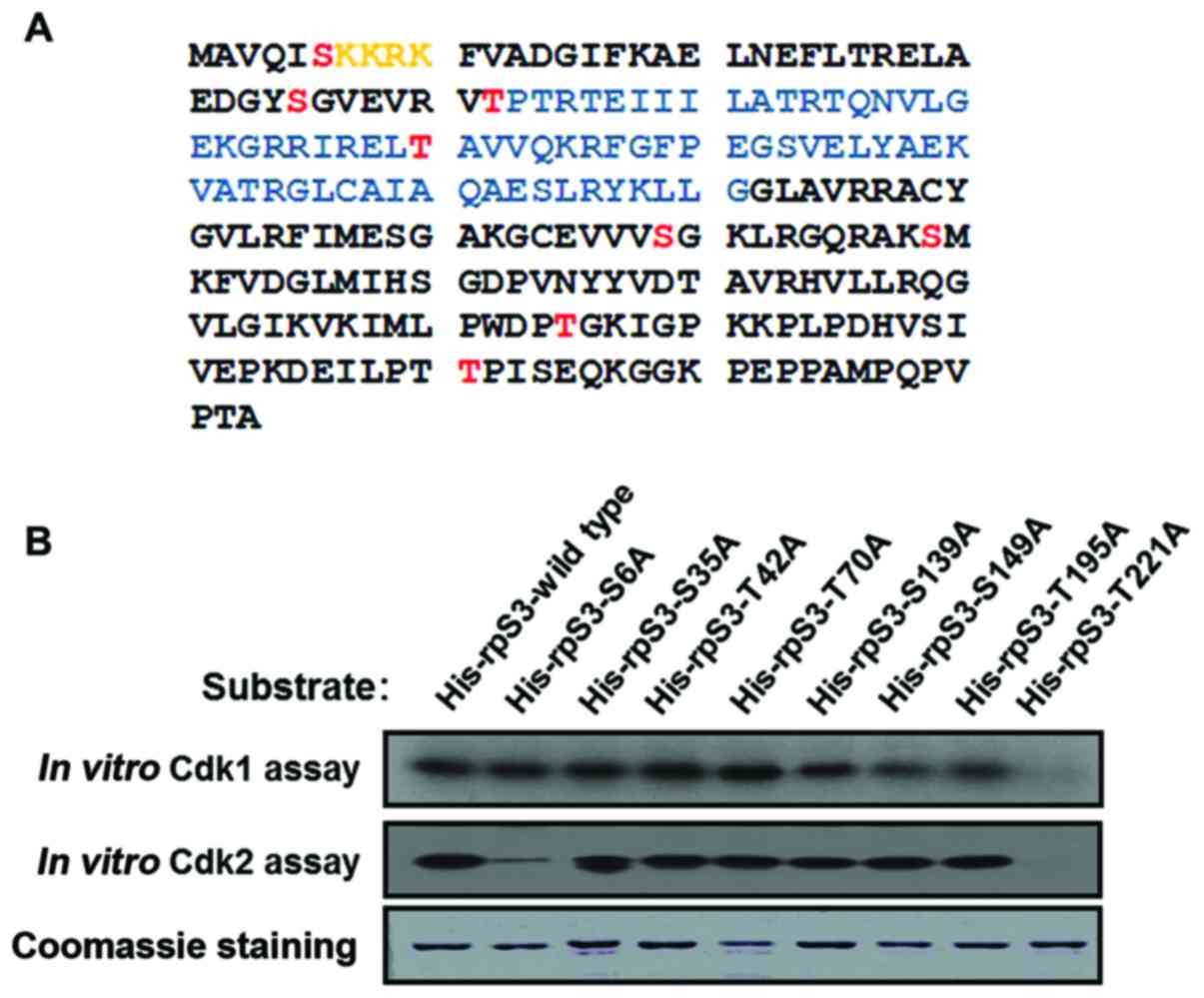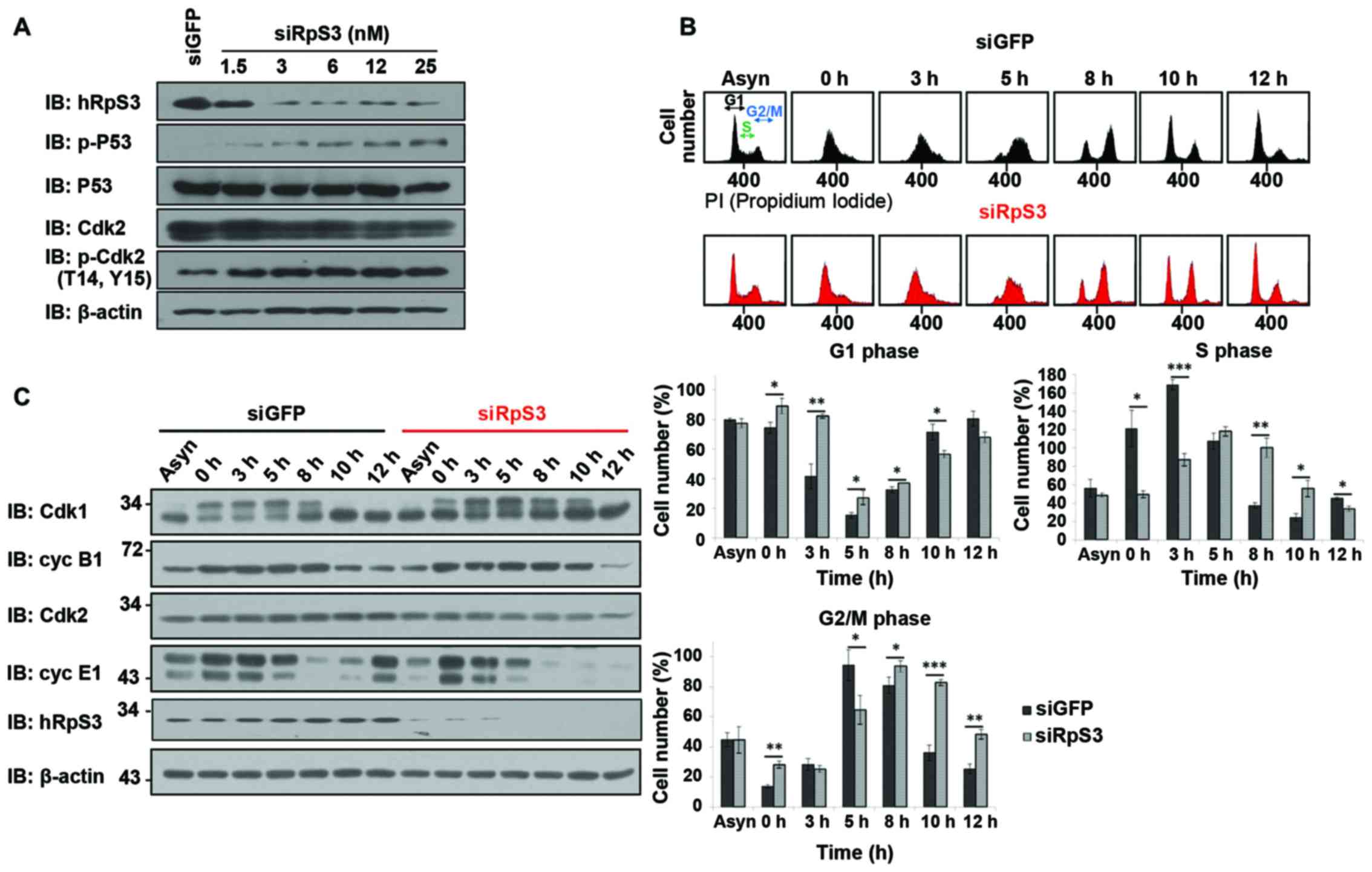|
1
|
Gu Y, Rosenblatt J and Morgan DO: Cell
cycle regulation of CDK2 activity by phosphorylation of Thr160 and
Tyr15. EMBO J. 11:3995–4005. 1992.PubMed/NCBI
|
|
2
|
Aleem E, Kiyokawa H and Kaldis P:
Cdc2-cyclin E complexes regulate the G1/S phase transition. Nat
Cell Biol. 7:831–836. 2005. View
Article : Google Scholar : PubMed/NCBI
|
|
3
|
Koff A, Giordano A, Desai D, Yamashita K,
Harper JW, Elledge S, Nishimoto T, Morgan DO, Franza BR and Roberts
JM: Formation and activation of a cyclin E-cdk2 complex during the
G1 phase of the human cell cycle. Science. 257:1689–1694. 1992.
View Article : Google Scholar : PubMed/NCBI
|
|
4
|
Dulić V, Lee E and Reed SI: Association of
human cyclin E with a periodic G1-S phase protein kinase. Science.
257:1958–1961. 1992. View Article : Google Scholar : PubMed/NCBI
|
|
5
|
Lew DJ, Dulić V and Reed SI: Isolation of
three novel human cyclins by rescue of G1 cyclin (Cln) function in
yeast. Cell. 66:1197–1206. 1991. View Article : Google Scholar : PubMed/NCBI
|
|
6
|
Coulonval K, Bockstaele L, Paternot S and
Roger PP: Phosphorylations of cyclin-dependent kinase 2 revisited
using two-dimensional gel electrophoresis. J Biol Chem.
278:52052–52060. 2003. View Article : Google Scholar : PubMed/NCBI
|
|
7
|
Wan F, Weaver A, Gao X, Bern M, Hardwidge
PR and Lenardo MJ: IKKβ phosphorylation regulates RPS3 nuclear
translocation and NF-κB function during infection with
Escherichia coli strain O157:H7. Nat Immunol. 12:335–343.
2011. View
Article : Google Scholar : PubMed/NCBI
|
|
8
|
Morgan DO: Cyclin-dependent kinases:
Engines, clocks, and microprocessors. Annu Rev Cell Dev Biol.
13:261–291. 1997. View Article : Google Scholar : PubMed/NCBI
|
|
9
|
Adams PD, Sellers WR, Sharma SK, Wu AD,
Nalin CM and Kaelin WG Jr: Identification of a cyclin-cdk2
recognition motif present in substrates and p21-like
cyclin-dependent kinase inhibitors. Mol Cell Biol. 16:6623–6633.
1996. View Article : Google Scholar : PubMed/NCBI
|
|
10
|
Martin A, Odajima J, Hunt SL, Dubus P,
Ortega S, Malumbres M and Barbacid M: Cdk2 is dispensable for cell
cycle inhibition and tumor suppression mediated by p27(Kip1) and
p21(Cip1). Cancer Cell. 7:591–598. 2005. View Article : Google Scholar : PubMed/NCBI
|
|
11
|
Kim SH, Lee JY and Kim J: Characterization
of a wide range base-damage-endonuclease activity of mammalian
rpS3. Biochem Biophys Res Commun. 328:962–967. 2005. View Article : Google Scholar : PubMed/NCBI
|
|
12
|
Hegde V, Kelley MR, Xu Y, Mian IS and
Deutsch WA: Conversion of the bifunctional 8-oxoguanine/beta-delta
apurinic/apyrimidinic DNA repair activities of Drosophila
ribosomal protein S3 into the human S3 monofunctional
beta-elimination catalyst through a single amino acid change. J
Biol Chem. 276:27591–27596. 2001. View Article : Google Scholar : PubMed/NCBI
|
|
13
|
Gao X and Hardwidge PR: Ribosomal protein
S3: A multifunctional target of attaching/effacing bacterial
pathogens. Front Microbiol. 2:1372011. View Article : Google Scholar : PubMed/NCBI
|
|
14
|
Warner J and McIntosh KB: How common are
extraribosomal functions of ribosomal protein? Mol Cell. 34:3–11.
2009. View Article : Google Scholar : PubMed/NCBI
|
|
15
|
Zimmermann RA: The double life of
ribosomal proteins. Cell. 15:130–132. 2003. View Article : Google Scholar
|
|
16
|
Naora H: Involvement of ribosomal proteins
in regulating cell growth and apoptosis: Translational modulation
or recruitment for extraribosomal activity? Immunol Cell Biol.
77:197–205. 1999. View Article : Google Scholar : PubMed/NCBI
|
|
17
|
Kim J, Chubatsu LS, Admon A, Stahl J,
Fellous R and Linn S: Implication of mammalian ribosomal protein S3
in the processing of DNA damage. J Biol Chem. 270:13620–13629.
1995. View Article : Google Scholar : PubMed/NCBI
|
|
18
|
Kim TS, Kim HD and Kim J:
PKCdelta-dependent functional switch of rpS3 between translation
and DNA repair. J Biochim Biophys Acta. 1793:395–405, 1793. 2009.
View Article : Google Scholar
|
|
19
|
Kim TS, Kim HD, Shin HS and Kim J:
Phosphorylation status of nuclear ribosomal protein S3 is
reciprocally regulated by protein kinase C{delta} and protein
phosphatase 2A. J Biol Chem. 284:21201–21208. 2009. View Article : Google Scholar : PubMed/NCBI
|
|
20
|
Lee SB, Kwon IS, Park J, Lee KH, Ahn Y,
Lee C, Kim J, Choi SY, Cho SW and Ahn JY: Ribosomal protein S3, a
new substrate of Akt, serves as a signal mediator between neuronal
apoptosis and DNA repair. J Bio Chem. 285:29457–29468. 2010.
View Article : Google Scholar
|
|
21
|
Yoon IS, Chung JH, Hahm SH, Park MJ, Lee
YR, Ko SI, Kang LW, Kim TS, Kim J and Han YS: Ribosomal protein S3
is phosphorylated by Cdk1/cdc2 during G2/M phase. BMB Rep.
8:529–534. 2011. View Article : Google Scholar
|
|
22
|
Spandari S, Sala F and Pedrali-Noy G:
Aphidicolin: A specific inhibitor of nuclear DNA replication in
eukaryotes. Trends Biochem Sci. 7:29–32. 1982. View Article : Google Scholar
|
|
23
|
Harper JV: Synchronization of cell
population in G1/S and G2/M phases of the cell cycle. Methods Mol
Biol. 296:157–166. 2005.PubMed/NCBI
|
|
24
|
Cude K, Wang Y, Choi HJ, Hsuan SL, Zhang
H, Wang CY and Xia Z: Regulation of the G2-M cell cycle progression
by the ERK5-NFkappaB signaling pathway. J Cell Biol. 177:253–264.
2007. View Article : Google Scholar : PubMed/NCBI
|
|
25
|
Watanabe N, Broome M and Hunter T:
Regulation of the human WEE1Hu CDK tyrosine 15-kinase during the
cell cycle. EMBO J. 14:1878–1891. 1995.PubMed/NCBI
|
|
26
|
Malumbers M and Barbacid M: To cycle or
not to cycle: A critical decision in cancer. Nat Rev Cancer.
1:222–231. 2001. View
Article : Google Scholar : PubMed/NCBI
|
|
27
|
Malumbers M and Barbacid M: Mammalian
cyclin-dependent kinases. Trends Biochem Sci. 30:630–641. 2005.
View Article : Google Scholar : PubMed/NCBI
|
|
28
|
Ecans T, Rosethal ET, Youngblom J, Distel
D and Hunt T: Cyclin: A protein specificed by maternal mRNA in sea
urchin eggs that is destroyed at each cleavage division. Cell.
33:389–396. 1983. View Article : Google Scholar : PubMed/NCBI
|
|
29
|
Salaun P, Rannou Y and Prigent C: Cdk1,
Plks, Auroras and Neks: The mitotic bodyguards. Adv Exp Med Biol.
617:41–56. 2008. View Article : Google Scholar : PubMed/NCBI
|
|
30
|
Yacoub A, Augen L, Kelley MR, Doetsch PW
and Deutsch WA: A Drosophila ribosomal protein contains
8-oxoguanine and abasic site DNA repair activities. EMBO J.
15:2306–2312. 1996.PubMed/NCBI
|
|
31
|
Deutsch WA, Yacoub A, Jaruga P, Zastawny
TH and Disdaroglu M: Characterization and mechanism of action of
Drosophila ribosomal protein S3 DNA glycosylase activity for
the removal of oxidatively damage DNA bases. J Biol Chem.
272:32857–32860. 1997. View Article : Google Scholar : PubMed/NCBI
|
|
32
|
Ko SI, Park JH, Park MJ, Kim J, Kang LW
and Han YS: Human ribosomal protein S3 (hRpS3) interacts with
uracil-DNA glycosylase (hUNG) and stimulates its glycosylase
activity. Mutat Res. 648:54–64. 2008. View Article : Google Scholar : PubMed/NCBI
|
|
33
|
Hegde V, Wang M and Deutsch WA: Human
ribosomal protein S3 interacts with DNA base excision repair
protein hAPE/Ref-1 and hOGG1. Biochemistry. 43:14211–14217. 2004.
View Article : Google Scholar : PubMed/NCBI
|
|
34
|
Bernstein KA and Baserga SJ: The small
subunit processome is required for cell cycle progression at G1.
Mol Biol Cell. 15:5038–5046. 2004. View Article : Google Scholar : PubMed/NCBI
|
|
35
|
Guo X, Shi Y, Gou Y, Li J, Han S, Zhang Y,
Huo J, Ning X, Sun L, Chen Y, et al: Human ribosomal protein S13
promotes gastric cancer growth through down-regulating p27 (Kip1).
J Cell Mol Med. 15:296–306. 2011. View Article : Google Scholar : PubMed/NCBI
|














